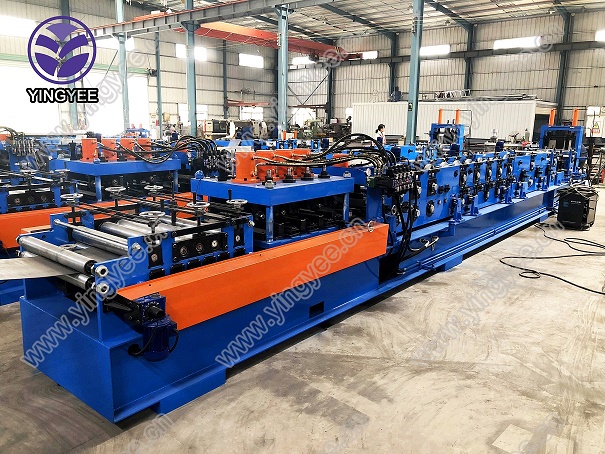
Double Layer Roofing Sheets Forming Machine An Overview
In the construction and manufacturing industries, the efficiency and durability of materials play a significant role in the overall quality of buildings. One innovation that has gained considerable attention is the double layer roofing sheets forming machine. This machine is designed to produce dual-layer roofing sheets, which not only provide superior strength and durability but also offer aesthetic appeal.
Understanding Double Layer Roofing Sheets
Double layer roofing sheets are composed of two distinct layers, typically made from metal, such as galvanized steel or aluminum. These sheets are engineered to withstand varying weather conditions while offering excellent insulation properties. The combination of two layers provides enhanced structural integrity, making them ideal for residential, commercial, and industrial applications.
The double layer system can also contribute to energy efficiency. By trapping air between the two layers, these roofing sheets help to regulate temperature and reduce energy consumption. This characteristic makes double layer roofing sheets an environmentally friendly option, appealing to architects and builders who prioritize sustainability.
The Role of the Double Layer Roofing Sheets Forming Machine
The double layer roofing sheets forming machine automates the production process, significantly increasing efficiency and reducing manual labor. The machine is equipped with advanced technology that allows for precise forming and cutting of the sheets. Here’s a breakdown of how this machine operates
1. Material Feeding The process begins with the feeding of raw material, usually in coil form, into the machine.
2. Roll Forming The heart of the machine consists of a series of rollers that shape the metal into the desired profile. The rollers are designed to handle two layers simultaneously, ensuring that both layers are formed accurately and uniformly.
3. Cutting and Shaping Once the layers are formed, the machine cuts them to specific lengths based on customer requirements. This automated process not only ensures precision but also reduces waste.
4. Stacking and Finishing After cutting, the sheets are stacked neatly for easy handling and transport. Some machines may include additional features for finishing, such as applying protective coatings or paints.

Advantages of Using the Machine
1. Efficiency The automation of the roofing sheet production process significantly reduces the time required to produce large quantities of sheets. This efficiency translates to cost savings for manufacturers and faster project completion for builders.
2. Quality Consistency Advanced technology ensures that each sheet produced is consistent in quality and dimension. This reduces the likelihood of material failure and improves overall project integrity.
3. Customization The double layer roofing sheets forming machine can be adjusted to produce various profiles and thicknesses, allowing manufacturers to cater to specific market demands.
4. Reduced Labor Costs With the machine taking over most of the production tasks, companies can reduce their labor costs and allocate human resources to other essential roles.
Market Applications
Double layer roofing sheets produced by these machines are extensively used in various sectors, including
- Residential roofing Providing homeowners with durable and aesthetically pleasing options. - Industrial structures Offering superior strength for warehouses and factories. - Commercial buildings Enhancing the visual appeal of retail spaces while maintaining structural integrity.
Conclusion
The double layer roofing sheets forming machine represents a significant advancement in roofing material production. Its ability to produce high-quality, efficient, and durable roofing sheets makes it an invaluable asset in the construction industry. As builders and manufacturers continue to seek innovative solutions, technologies like this will play a pivotal role in shaping the future of construction and architecture.